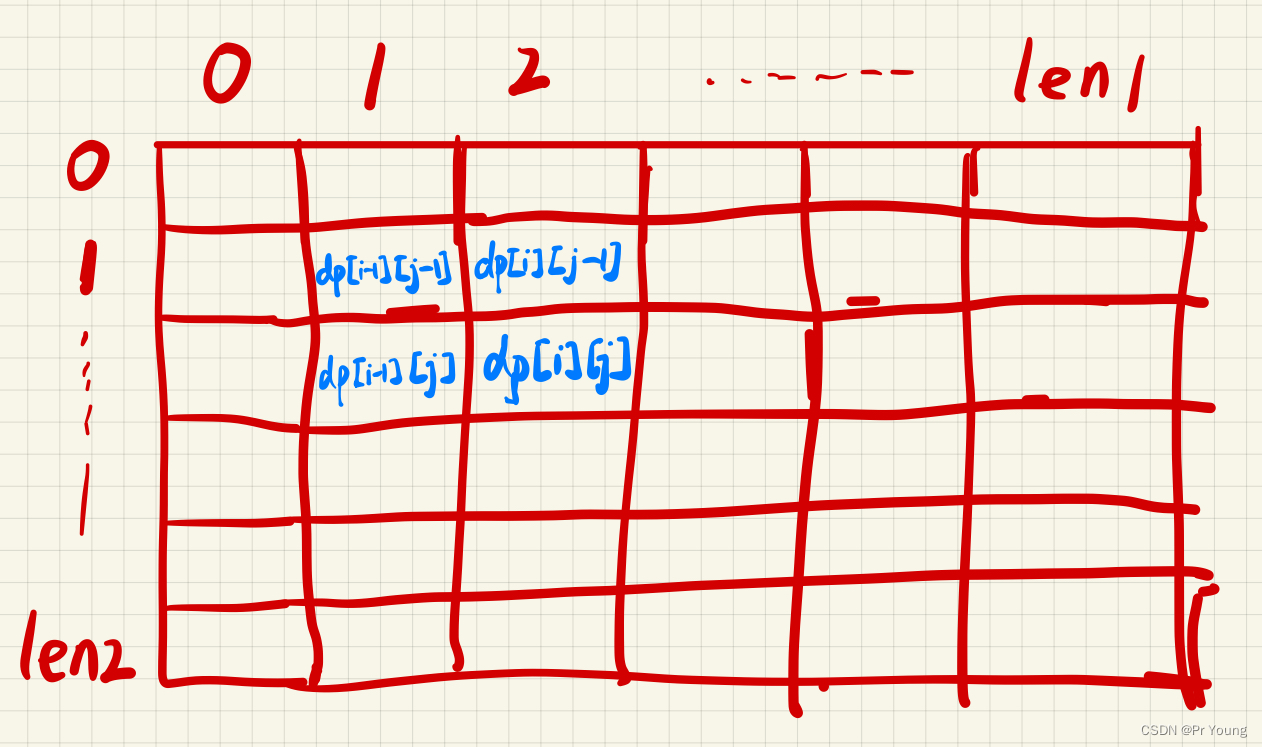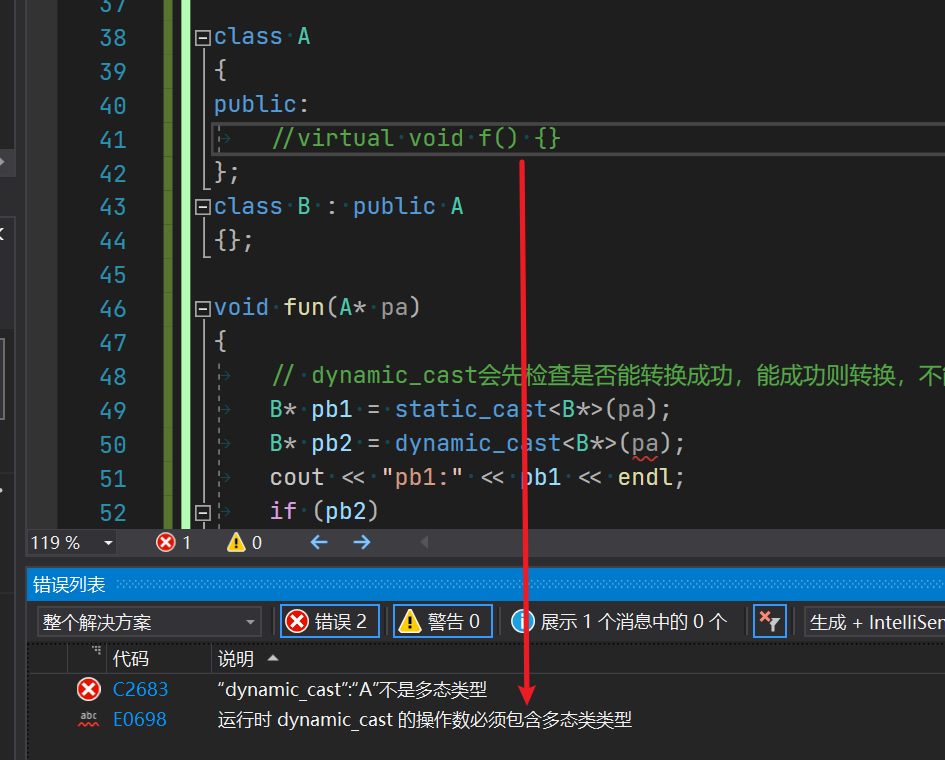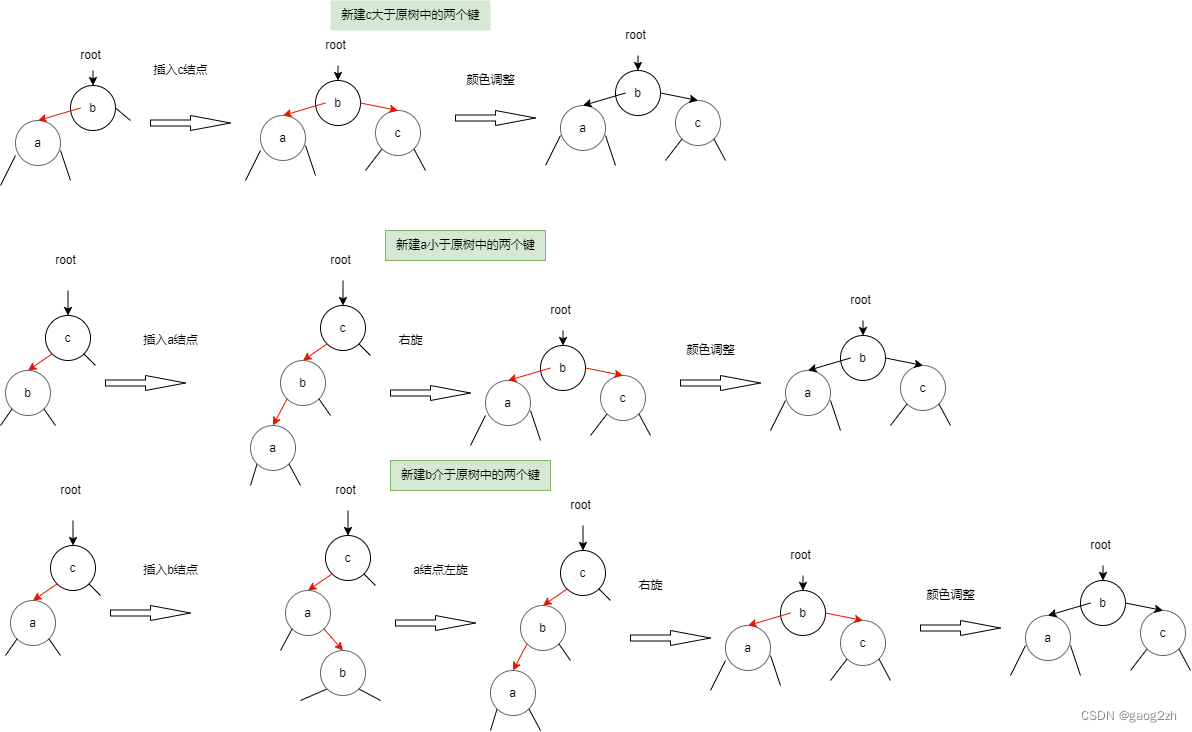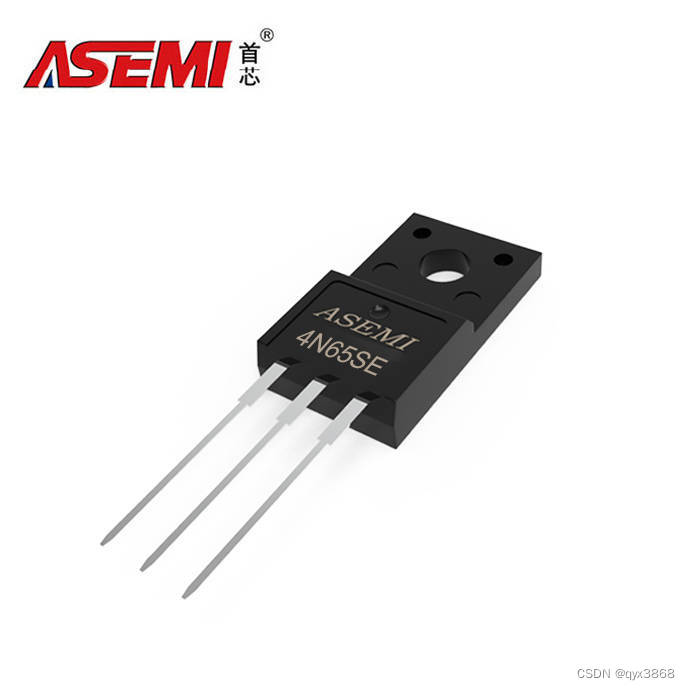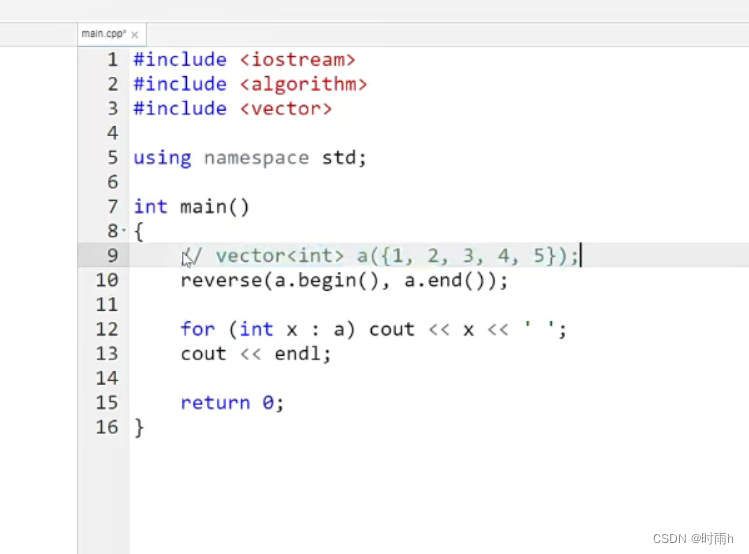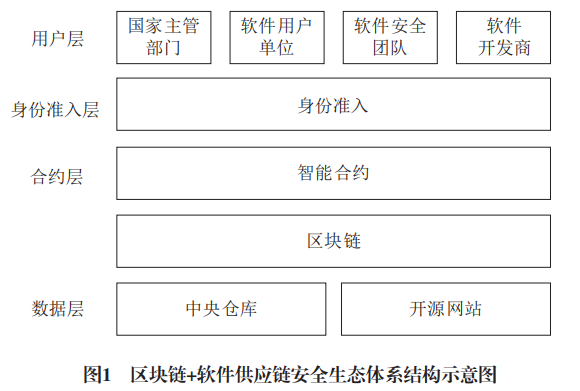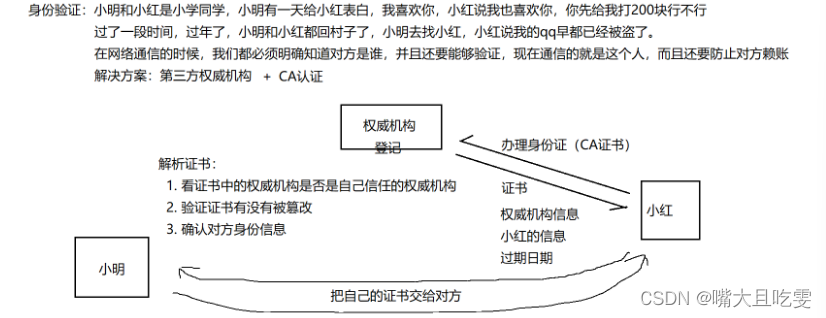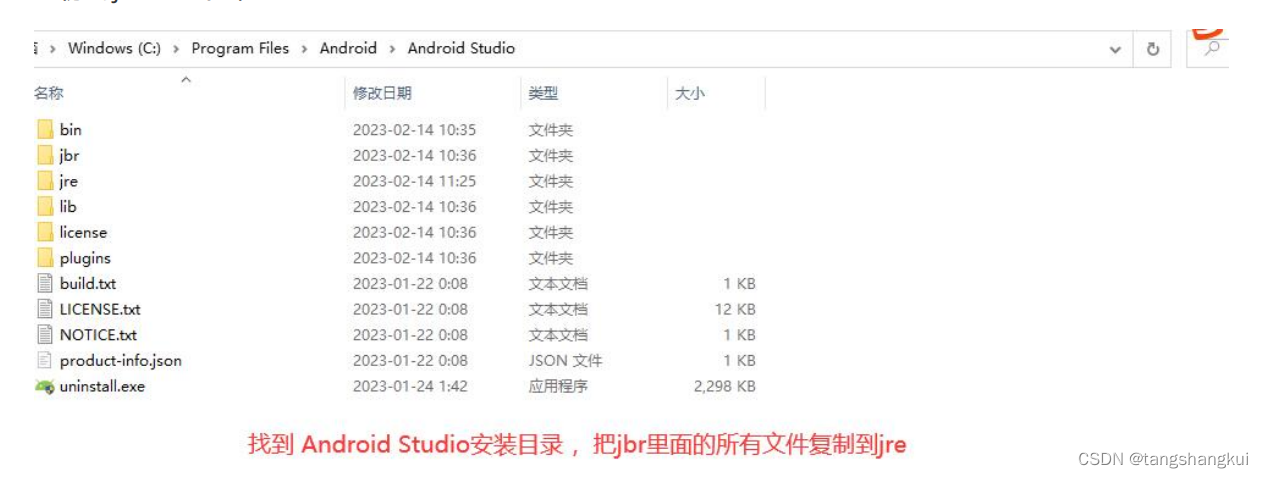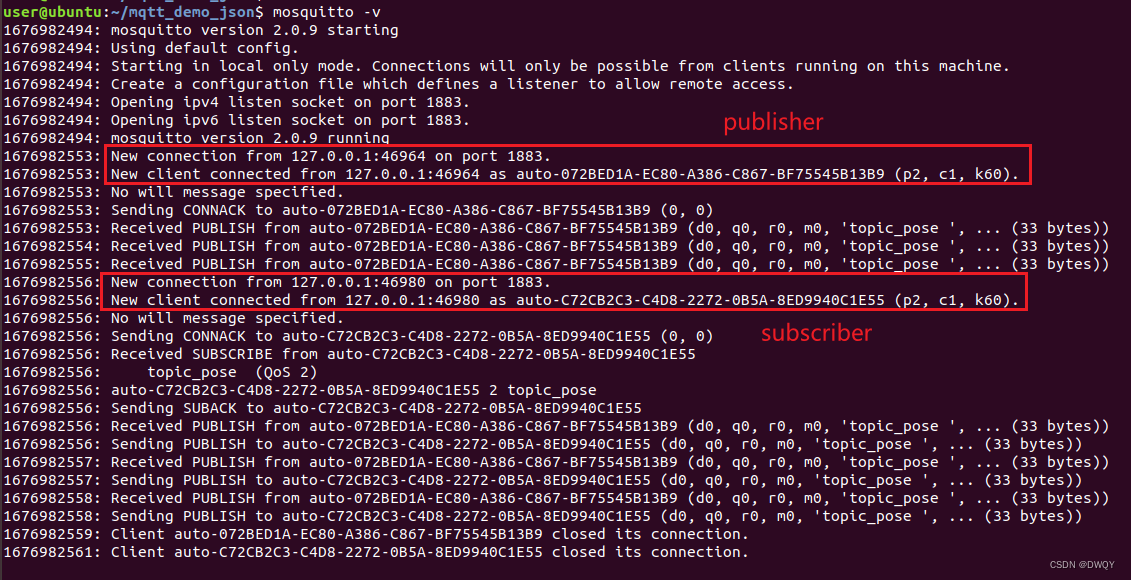Netty高级应用之:编解码器与群聊天室开发
文章目录
- Netty高级应用之:编解码器与群聊天室开发
- Netty编解码器
- Java的编解码
- Netty编解码器
- 概念
- 解码器(Decoder)
- 编码器(Encoder)
- 编码解码器Codec
- Netty案例-群聊天室
- 聊天室服务端编写
- 聊天室客户端编写
Netty编解码器
Java的编解码
- 编码(Encode)称为序列化, 它将对象序列化为字节数组,用于网络传输、数据持久化或者其它用途。
- 解码(Decode)称为反序列化,它把从网络、磁盘等读取的字节数组还原成原始对象(通常是原始对象的拷贝),以方便后续的业务逻辑操作。

java序列化对象只需要实现java.io.Serializable接口并生成序列化ID,这个类就能够通过java.io.ObjectInput和java.io.ObjectOutput序列化和反序列化。
Java序列化目的:1.网络传输。2.对象持久化。
Java序列化缺点:1.无法跨语言。 2.序列化后码流太大。3.序列化性能太低
Java序列化仅仅是Java编解码技术的一种,由于它的种种缺陷,衍生出了多种编解码技术和框架,这些编解码框架实现消息的高效序列化。
Netty编解码器
概念
在网络应用中需要实现某种编解码器,将原始字节数据与自定义的消息对象进行互相转换。网络中都是以字节码的数据形式来传输数据的,服务器编码数据后发送到客户端,客户端需要对数据进行解码。
对于Netty而言,编解码器由两部分组成:编码器、解码器。
- 解码器:负责将消息从字节或其他序列形式转成指定的消息对象。
- 编码器:将消息对象转成字节或其他序列形式在网络上传输。
Netty 的编(解)码器实现了 ChannelHandlerAdapter,也是一种特殊的 ChannelHandler,所以依赖于 ChannelPipeline,可以将多个编(解)码器链接在一起,以实现复杂的转换逻辑。
Netty里面的编解码:
- 解码器:负责处理“入站 InboundHandler”数据。
- 编码器:负责“出站OutboundHandler” 数据。
解码器(Decoder)
解码器负责解码“入站”数据从一种格式到另一种格式,解码器处理入站数据是抽象ChannelInboundHandler的实现。需要将解码器放在ChannelPipeline中。对于解码器,Netty中主要提供了抽象基类ByteToMessageDecoder和MessageToMessageDecoder

抽象解码器
- ByteToMessageDecoder: 用于将字节转为消息,需要检查缓冲区是否有足够的字节
- ReplayingDecoder: 继承ByteToMessageDecoder,不需要检查缓冲区是否有足够的字节,但是 ReplayingDecoder速度略慢于ByteToMessageDecoder,同时不是所有的ByteBuf都支持。项目复杂性高则使用ReplayingDecoder,否则使用ByteToMessageDecoder
- MessageToMessageDecoder: 用于从一种消息解码为另外一种消息(例如POJO到POJO)
核心方法
decode(ChannelHandlerContext ctx, ByteBuf msg, List<Object> out)
代码实现
解码器:
import io.netty.buffer.ByteBuf;
import io.netty.channel.ChannelHandlerContext;
import io.netty.handler.codec.MessageToMessageDecoder;
import io.netty.util.CharsetUtil;
import java.util.List;
/**
* 消息解码器
*/
public class MessageDecoder extends MessageToMessageDecoder {
@Override
protected void decode(ChannelHandlerContext ctx, Object msg, List out) throws Exception {
System.out.println("正在进行消息解码....");
ByteBuf byteBuf = (ByteBuf) msg;
out.add(byteBuf.toString(CharsetUtil.UTF_8));//传递到下一个handler
}
}
通道读取方法
/**
* 通道读取事件
*
* @param ctx
* @param msg
* @throws Exception
*/
@Override
public void channelRead(ChannelHandlerContext ctx, Object msg) throws Exception {
System.out.println("客户端发送过来的消息:" + msg);
}
启动类
protected void initChannel(SocketChannel ch) throws Exception {
//8. 向pipeline中添加自定义业务处理handler
ch.pipeline().addLast(new MessageDecoder());//添加解码器
ch.pipeline().addLast(new NettyServerHandler());
}
编码器(Encoder)
与ByteToMessageDecoder和MessageToMessageDecoder相对应,Netty提供了对应的编码器实现MessageToByteEncoder和MessageToMessageEncoder,二者都实现ChannelOutboundHandler接口。

抽象编码器
- MessageToByteEncoder: 将消息转化成字节
- MessageToMessageEncoder: 用于从一种消息编码为另外一种消息(例如POJO到POJO)
核心方法
encode(ChannelHandlerContext ctx, String msg, List<Object> out)
代码实现
编码器:
import io.netty.buffer.Unpooled;
import io.netty.channel.ChannelHandlerContext;
import io.netty.handler.codec.MessageToMessageEncoder;
import io.netty.util.CharsetUtil;
import java.util.List;
/**
* 消息的编码器
*/
public class MessageEncoder extends MessageToMessageEncoder {
@Override
protected void encode(ChannelHandlerContext ctx, Object msg, List out) throws Exception {
System.out.println("消息正在进行编码....");
String str = (String) msg;
out.add(Unpooled.copiedBuffer(str, CharsetUtil.UTF_8));
}
}
消息发送:
/**
* 通道就绪事件
*
* @param ctx
* @throws Exception
*/
@Override
public void channelActive(ChannelHandlerContext ctx) throws Exception {
ChannelFuture future = ctx.writeAndFlush("你好呀.我是Netty客户端");
future.addListener(new ChannelFutureListener() {
@Override
public void operationComplete(ChannelFuture future) throws Exception {
if (future.isSuccess()) {
System.out.println("数据发送成功!");
} else {
System.out.println("数据发送失败!");
}
}
});
}
启动类:
@Override
protected void initChannel(SocketChannel ch) throws Exception {
//6. 向pipeline中添加自定义业务处理handler
ch.pipeline().addLast(new MessageDecoder());//添加解码器
ch.pipeline().addLast(new MessageEncoder());//添加编码器
ch.pipeline().addLast(new NettyClientHandler());
}
编码解码器Codec
编码解码器: 同时具有编码与解码功能,特点同时实现了ChannelInboundHandler和ChannelOutboundHandler接口,因此在数据输入和输出时都能进行处理。
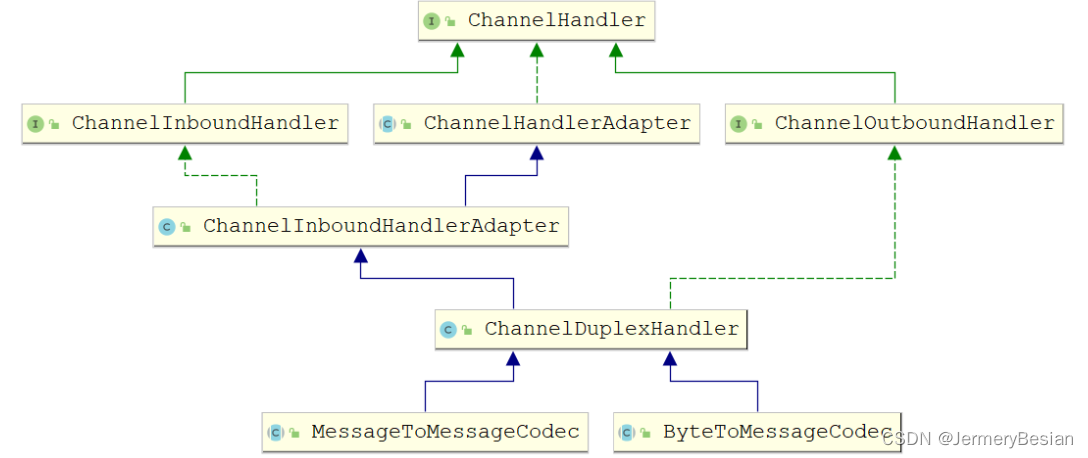
Netty提供提供了一个ChannelDuplexHandler适配器类,编码解码器的抽象基类ByteToMessageCodec ,MessageToMessageCodec都继承与此类.
代码实现
import io.netty.buffer.ByteBuf;
import io.netty.buffer.Unpooled;
import io.netty.channel.ChannelHandlerContext;
import io.netty.handler.codec.MessageToMessageCodec;
import io.netty.util.CharsetUtil;
import java.util.List;
/**
* 消息编解码器
*/
public class MessageCodec extends MessageToMessageCodec {
/**
* 编码
*
* @param ctx
* @param msg
* @param out
* @throws Exception
*/
@Override
protected void encode(ChannelHandlerContext ctx, Object msg, List out) throws Exception {
System.out.println("消息正在进行编码....");
String str = (String) msg;
out.add(Unpooled.copiedBuffer(str, CharsetUtil.UTF_8));
}
/**
* 解码
*
* @param ctx
* @param msg
* @param out
* @throws Exception
*/
@Override
protected void decode(ChannelHandlerContext ctx, Object msg, List out) throws Exception {
System.out.println("正在进行消息解码....");
ByteBuf byteBuf = (ByteBuf) msg;
out.add(byteBuf.toString(CharsetUtil.UTF_8));//传递到下一个handler
}
}
启动类
protected void initChannel(SocketChannel ch) throws Exception {
//8. 向pipeline中添加自定义业务处理handler
ch.pipeline().addLast(new MessageCoder());//添加编解码器
ch.pipeline().addLast(new NettyServerHandler());
}
Netty案例-群聊天室
案例要求:
- 编写一个 Netty 群聊系统,实现服务器端和客户端之间的数据简单通讯
- 实现多人群聊
- 服务器端:可以监测用户上线,离线,并实现消息转发功能
- 客户端:可以发送消息给其它所有用户,同时可以接受其它用户发送的消息
聊天室服务端编写
NettyChatServer
import com.lagou.demo.NettyServerHandler;
import io.netty.bootstrap.ServerBootstrap;
import io.netty.channel.*;
import io.netty.channel.nio.NioEventLoopGroup;
import io.netty.channel.socket.SocketChannel;
import io.netty.channel.socket.nio.NioServerSocketChannel;
import io.netty.handler.codec.string.StringDecoder;
import io.netty.handler.codec.string.StringEncoder;
/**
* 聊天室服务端
*/
public class NettyChatServer {
//端口号
private int port;
public NettyChatServer(int port) {
this.port = port;
}
public void run() throws InterruptedException {
//1. 创建bossGroup线程组: 处理网络事件--连接事件
EventLoopGroup bossGroup = null;
//2. 创建workerGroup线程组: 处理网络事件--读写事件 2*处理器线程数
EventLoopGroup workerGroup = null;
try {
bossGroup = new NioEventLoopGroup(1);
workerGroup = new NioEventLoopGroup();
//3. 创建服务端启动助手
ServerBootstrap serverBootstrap = new ServerBootstrap();
//4. 设置bossGroup线程组和workerGroup线程组
serverBootstrap.group(bossGroup, workerGroup)
.channel(NioServerSocketChannel.class) //5. 设置服务端通道实现为NIO
.option(ChannelOption.SO_BACKLOG, 128)//6. 参数设置
.childOption(ChannelOption.SO_KEEPALIVE, Boolean.TRUE)//6. 参数设置
.childHandler(new ChannelInitializer<SocketChannel>() { //7. 创建一个通道初始化对象
@Override
protected void initChannel(SocketChannel ch) throws Exception {
//8. 向pipeline中添加自定义业务处理handler
//添加编解码器
ch.pipeline().addLast(new StringDecoder());
ch.pipeline().addLast(new StringEncoder());
// todo
ch.pipeline().addLast(new NettyChatServerHandler());
}
});
//9. 启动服务端并绑定端口,同时将异步改为同步
ChannelFuture future = serverBootstrap.bind(port);
future.addListener(new ChannelFutureListener() {
@Override
public void operationComplete(ChannelFuture future) throws Exception {
if (future.isSuccess()) {
System.out.println("端口绑定成功!");
} else {
System.out.println("端口绑定失败!");
}
}
});
System.out.println("聊天室服务端启动成功.");
//10. 关闭通道(并不是真正意义上关闭,而是监听通道关闭的状态)和关闭连接池
future.channel().closeFuture().sync();
} finally {
bossGroup.shutdownGracefully();
workerGroup.shutdownGracefully();
}
}
public static void main(String[] args) throws InterruptedException {
new NettyChatServer(9998).run();
}
}
NettyChatServerHandle
import io.netty.channel.Channel;
import io.netty.channel.ChannelHandlerContext;
import io.netty.channel.SimpleChannelInboundHandler;
import java.util.ArrayList;
import java.util.List;
/**
* 聊天室业务处理类
*/
public class NettyChatServerHandler extends SimpleChannelInboundHandler<String> {
public static List<Channel> channelList = new ArrayList<>();
/**
* 通道就绪事件
*
* @param ctx
* @throws Exception
*/
@Override
public void channelActive(ChannelHandlerContext ctx) throws Exception {
Channel channel = ctx.channel();
//当有新的客户端连接的时候, 将通道放入集合
channelList.add(channel);
System.out.println("[Server]:" +
channel.remoteAddress().toString().substring(1) + "在线.");
}
/**
* 通道未就绪--channel下线
*
* @param ctx
* @throws Exception
*/
@Override
public void channelInactive(ChannelHandlerContext ctx) throws Exception {
Channel channel = ctx.channel();
//当有客户端断开连接的时候,就移除对应的通道
channelList.remove(channel);
System.out.println("[Server]:" +
channel.remoteAddress().toString().substring(1) + "下线.");
}
/**
* 通道读取事件
*
* @param ctx
* @param msg
* @throws Exception
*/
@Override
protected void channelRead0(ChannelHandlerContext ctx, String msg) throws Exception {
//当前发送消息的通道, 当前发送的客户端连接
Channel channel = ctx.channel();
for (Channel channel1 : channelList) {
//排除自身通道
if (channel != channel1) {
channel1.writeAndFlush("[" + channel.remoteAddress().toString().substring(1)
+ "]说:" + msg);
}
}
}
/**
* 异常处理事件
*
* @param ctx
* @param cause
* @throws Exception
*/
@Override
public void exceptionCaught(ChannelHandlerContext ctx, Throwable cause) throws Exception {
cause.printStackTrace();
Channel channel = ctx.channel();
//移除集合
channelList.remove(channel);
System.out.println("[Server]:" +
channel.remoteAddress().toString().substring(1) + "异常.");
}
}
聊天室客户端编写
NettyChatClient
import io.netty.bootstrap.Bootstrap;
import io.netty.channel.Channel;
import io.netty.channel.ChannelFuture;
import io.netty.channel.ChannelInitializer;
import io.netty.channel.EventLoopGroup;
import io.netty.channel.nio.NioEventLoopGroup;
import io.netty.channel.socket.SocketChannel;
import io.netty.channel.socket.nio.NioSocketChannel;
import io.netty.handler.codec.string.StringDecoder;
import io.netty.handler.codec.string.StringEncoder;
import java.util.Scanner;
/**
* 聊天室的客户端
*/
public class NettyChatClient {
private String ip;//服务端IP
private int port;//服务端端口号
public NettyChatClient(String ip, int port) {
this.ip = ip;
this.port = port;
}
public void run() throws InterruptedException {
//1. 创建线程组
EventLoopGroup group = null;
try {
group = new NioEventLoopGroup();
//2. 创建客户端启动助手
Bootstrap bootstrap = new Bootstrap();
//3. 设置线程组
bootstrap.group(group)
.channel(NioSocketChannel.class)//4. 设置客户端通道实现为NIO
.handler(new ChannelInitializer<SocketChannel>() { //5. 创建一个通道初始化对象
@Override
protected void initChannel(SocketChannel ch) throws Exception {
//6. 向pipeline中添加自定义业务处理handler
//添加编解码器
ch.pipeline().addLast(new StringDecoder());
ch.pipeline().addLast(new StringEncoder());
//添加客户端的处理类
ch.pipeline().addLast(new NettyChatClientHandler());
}
});
//7. 启动客户端,等待连接服务端,同时将异步改为同步
ChannelFuture channelFuture = bootstrap.connect(ip, port).sync();
Channel channel = channelFuture.channel();
System.out.println("-------" + channel.localAddress().toString().substring(1) + "--------");
Scanner scanner = new Scanner(System.in);
while (scanner.hasNextLine()) {
String msg = scanner.nextLine();
//向服务端发送消息
channel.writeAndFlush(msg);
}
//8. 关闭通道和关闭连接池
channelFuture.channel().closeFuture().sync();
} finally {
group.shutdownGracefully();
}
}
public static void main(String[] args) throws InterruptedException {
new NettyChatClient("127.0.0.1", 9998).run();
}
}
NettyChatClientHandle
import io.netty.channel.ChannelHandlerContext;
import io.netty.channel.SimpleChannelInboundHandler;
/**
* 聊天室处理类
*/
public class NettyChatClientHandler extends SimpleChannelInboundHandler<String> {
/**
* 通道读取就绪事件
*
* @param ctx
* @param msg
* @throws Exception
*/
@Override
protected void channelRead0(ChannelHandlerContext ctx, String msg) throws Exception {
System.out.println(msg);
}
}
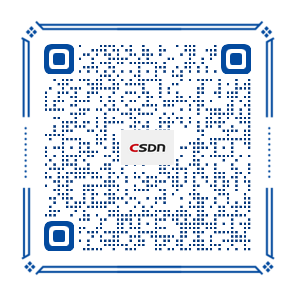


![buu [WUSTCTF2020]情书 1](https://img-blog.csdnimg.cn/fa91c956d4be44698969044ad71fec4a.png)

